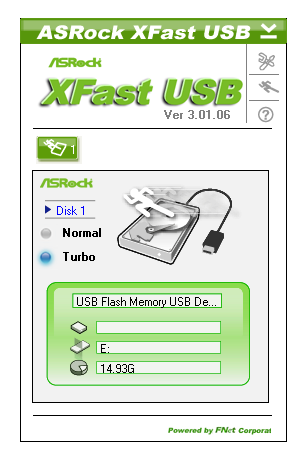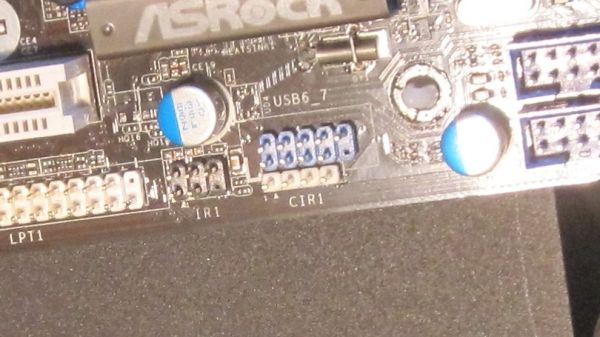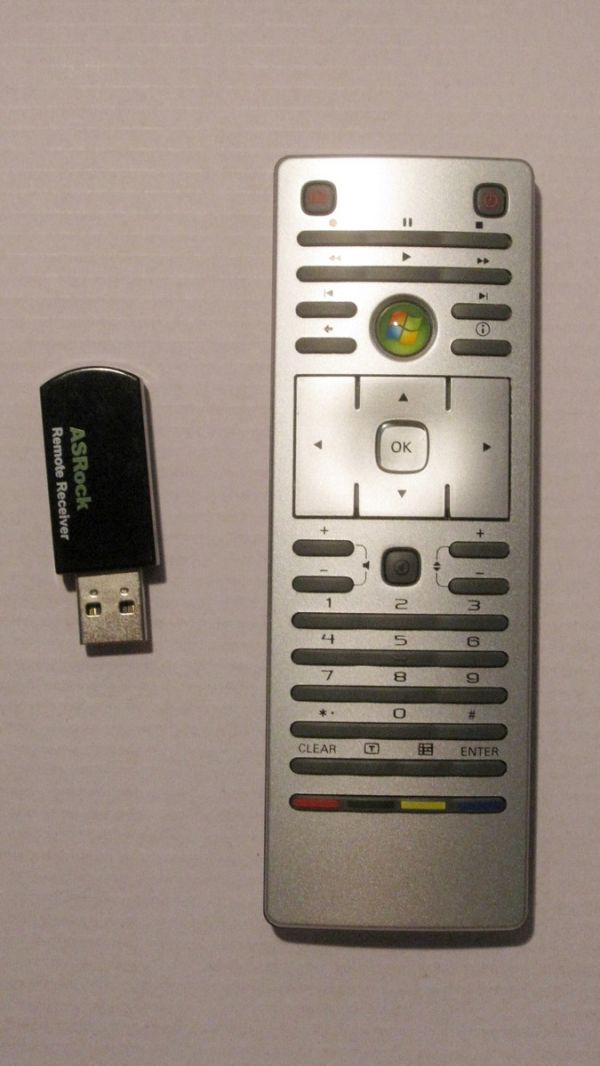H67 – A Triumvirate of Tantalizing Technology
by Ian Cutress on March 27, 2011 6:25 PM EST- Posted in
- Motherboards
- Sandy Bridge
- H67
Board Features
| Market Segment | Mainstream H67 |
| CPU Interface | LGA 1155 |
| CPU Support | i3/i5/i7 Sandy Bridge |
| Chipset | H67 |
| Base Clock Frequency | 100 MHz |
| DDR3 Memory Speed | 1000 or 1333 MHz |
| Core Voltage | Auto |
| CPU Clock Multiplier | Dependant on CPU |
| DRAM Voltage | Auto, 1.2V to 1.8V in 0.015V increments |
| DRAM Command Rate | Auto, 1N or 2N |
| Memory Slots |
Four 240-pin DDR3 DIMM slots in dual-channel Regular unbuffered DD3 memory Up to 32GB total supported |
| Expansion Slots |
1 x PCI Express 2.0 x16 slot 2 x PCI Express 2.0 x1 slots 1 x PCI slot |
| Onboard SATA/RAID |
2 x SATA 6.0 Gb/s ports (white) with RAID 0, 1, 5 and 10 3 x SATA 3.0 Gb/s ports (blue) with RAID 0, 1, 5 and 10 1 x eSATA 3.0 Gb/s ports |
| Onboard |
2 x SATA 6.0 Gb/s ports (white) 3 x SATA 3.0 Gb/s ports (blue) 1 x Floppy connector 1 x IR header 1 x CIR header 1 x Print Port header 1 x COM port header 1 x HDMI_SPDIF header 1 x Power LED header Front Panel audio connector 3 x USB 2.0 header (for 6 ports) 1 x USB 3.0 header (for 2 ports) |
| Onboard LAN | Realtek RTL8111E Gigabit Ethernet |
| Onboard Audio | Realtek ALC892 7.1-Channel HD Audio |
| Power Connectors |
24-pin EATX Power connector 8-pin EATX 12V Power connector |
| Fan Headers |
1 x CPU Fan connector (4-pin) 3 x Chassis Fan connectors (3 x 3-pin) 1 x PS/2 Keyboard Port |
| I/O Panel |
1 x D-Sub 1 x DVI-D 1 x HDMI Port 1 x DisplayPort 1 x Optical SPDIF Out Port 4 x USB 2.0 Ports 2 x USB 3.0 Ports (Etron EJ168A) 2 x eSATA 3Gb/s Port 1 x LAN (RJ-45) Gigabit Ethernet Audio Connectors |
| BIOS | 1.3 |
In the Box
- I/O shield
- USB 3.0 front panel
- USB 3.0 rear bracket
- Anaglyph Red-Blue 3D Glasses
- 2 x SATA cables
- 4 x HDD screws
- 6 x Chassis screws
My favorite addition to a Sandy Bridge motherboard packages comes in again – ASRock like supplying a USB 3.0 front bracket with their motherboards that comes with a space to put in an SSD – easily a product of $15 value if it were available separately. Also in the package is a pair of retro anaglyph 3D glasses if you own any video in red-blue 3D format.
The motherboard also comes with an infra-red receiver and remote control, designed to work with your Media center software. The infra-receiver must be connected to a front-panel USB which is in turn connected to the CIR motherboard connector:
Instructions to install this are all in the manual. The manual was oddly not on the CD we received with the motherboard, but is available online. The remote itself seems fairly generic, but does not have a flashing LED to signify when you are pressing a button (a must-have for any remote control in my opinion), but the package does come with two CR-2032 coin batteries for the remote.
Software
As with the P67 Extreme4 review, ASRock have packaged most of their utilities into one program, making it quicker and easier to install and uninstall. With their CD, apart from the driver updates, ASRock include three programs:
ASRock eXtreme Tuning Utility (AXTU)
The AXTU that ships with the H67M-GE/HT is essentially the same software that comes with the P67 Extreme4, except it comes with all the extras required for on-processor graphics. Though as you might be able to tell from this first picture, it cannot exactly read the frequency of the graphics side accurately. Mind you, I would love a 10300 MHz GPU!
The fan control is pretty standard for ASRock fare – out of the headers on the board you can control the CPU fan and two of chassis fans. The AXTU will define a power curve/line for the fans given your suggested target temperature and max speed. Ultimately this is not the most awesome utility in the world for fan speeds, but it does the job it is programmed to do.
The overclocking section of the AXTU allows the standard selection of voltages, but also the CPU Ratio and Graphics frequency. In this case, you can define the maximum CPU Ratio – as we are using a 2500K on H67, it is a 37x limit on the single-core with turbo boost. The graphics frequency setting allows all the way up to 3000 MHz in 50 MHz steps, but as with all these options, requires a reboot. Even then, just because you selected it does not mean it is stable. Have a quick gander on my overclocking results for this board to see what I mean.
ASRock Instant Boot

ASRock’s Instant Boot is designed to help decrease the time to boot, by when you select shutdown, it will perform a full restart, then kick a form of hibernation in and enter low power mode. Thus when you press the power button next, the OS will appear a lot quicker than a full boot. As the CPU stays at stock on H67, we found no issues with Instant Boot.
ASRock XFast USB

If you remember XFast USB from our previous ASRock article, then you may remember that when installed and enabled, it essentially blew the competition away in terms of read/write and our standard copy benchmark. It is no exception on H67. There's a lack of information online as to exactly how this software works, and the line from ASRock is that the 'XFast USB software modifies part of the USB driver, allowing it to multi-task and enhance the performance - ASRock are continually tuning the performance for better results'. In practice, this works really well.















56 Comments
View All Comments
bigboxes - Monday, March 28, 2011 - link
That's why I always have a spare video card for just such an emergency. Since my motherboards tend to be on the higher end they don't have video out anyways. I wouldn't want the mfg to take away other ports just to include video out. It makes sense on HTPC applications as well as low end or micro-ATX boxes where utility is the priority. I just buy a cheap card that is $30 after rebate and leave it in the box until I need it for troubleshooting or in case of emergency.rustycurse - Monday, March 28, 2011 - link
on page 1:"The same question ultimately applies to the Sandy Bridge chipsets – why only allow CPU overclocking on P67 (and Z68 in the future)? "
I was always thought that term 'Sandy Bridge' is applied to CPU technology and 'Cougar point' to the chipset or am I wrong?
...but about shown mobos ... neither of them suit my tasks. I won't buy it
crispbp04 - Monday, March 28, 2011 - link
"The ECS H67H2-M is a few serious check points against it as a board to use."is or has?
WasabiVengeance - Monday, March 28, 2011 - link
Quick question: How many of those vid outputs can the board actually use simultaneously? Previously intel chipsets were limited to 2.Shadowmaster625 - Monday, March 28, 2011 - link
"However, I remember the time when I was a scrimping student. I wanted high gaming performance at the lowest cost – if Sandy Bridge was out then, and I was specifically after the Sandy Bridge platform over anything AMD, then a H67 with an i3-2100 and the biggest graphics card I could afford would be a viable option."That would be a huge waste of money. Why buy an i3-2100 if you're just going to plug in a gpu anyway? And why buy an H67 when it clearly costs $50 beyond what it should, especially since it has no northbridge.
An ASRock M3A770DE motherboard AND an Athlon X3 cpu together costs the same as one of these H67 scams. Not to mention the $125 for the intel cpu. No way. If I needed more cpu performance I would get the Phenom II X4 965 Black Edition and still have an extra $50 that could go into a better gpu.
DaveSimmons - Monday, March 28, 2011 - link
For budget gaming, H61 seems the better choice by far, with motherboards in the $60-65 range, At that price the price advantage of AMD budget CPUs go away (at stock speed anyway) and the intel HSF is quieter than stock AMD HSF from what I've read.SilentPCReview compared Intel Core i3-2100 vs. AMD Phenom II X2 565 and the intel won on both performance and power use. Spend a bit more for an i5 and you'll have a solid midrange gaming system.at a budget price.
ritchan - Tuesday, March 29, 2011 - link
"With H67 and its no overclocking rule, the market that wants a cheaper board can get that cheaper board."Yet these reviewed boards are still on average more expensive than an AMD board in an equivalent market segment. Which support overclocking and core unlocking. Also, bargain bin motherboards haven't been known for their overclocking prowess, i.e. the power window argument doesn't hold. If you're buying cheap, you get that power window anyway.
Also notice how the cheaper AMD boards like the 870-UD3R or MSI's boards come with absolutely no heatsinks on the VRMs. Bye bye, power window argument.
Stop trying to justify negative market segmentation. The H67/P67 split is a step back from where things were before, and it only gives Intel a good excuse to charge extra for overclocking enabled chipsets in the future. Wait, they're already doing that... and you're sugarcoating it for them.
glad2meetu - Tuesday, March 29, 2011 - link
I think Intel has done a very poor job with the Sandy Bridge release. Intel appears like it is lost in the woods these days and needs a new CEO.I think I would choose a ASUS or a Gigabyte motherboard if I had to pick one for Sandy Bridge. I am surprised how poor the Intel chipsets are. Intel inside no longer means anything special.
strikeback03 - Tuesday, March 29, 2011 - link
The CPUs are special. The rest of the platform, not so much. If Z68 had been included at launch, and all 6 series chipsets had included USB3 and all SATA ports 6Gbps (not just 2) then I would have a different opinion.strikeback03 - Tuesday, March 29, 2011 - link
Is a cooling fan for RAM really necessary on a platform that allows essentially no overclocking and has relatively fixed memory settings?Also, Intel advertising these CPUs as having a certain multiplier in single-threaded mode then not letting the motherboards use that multiplier is a load of bull.